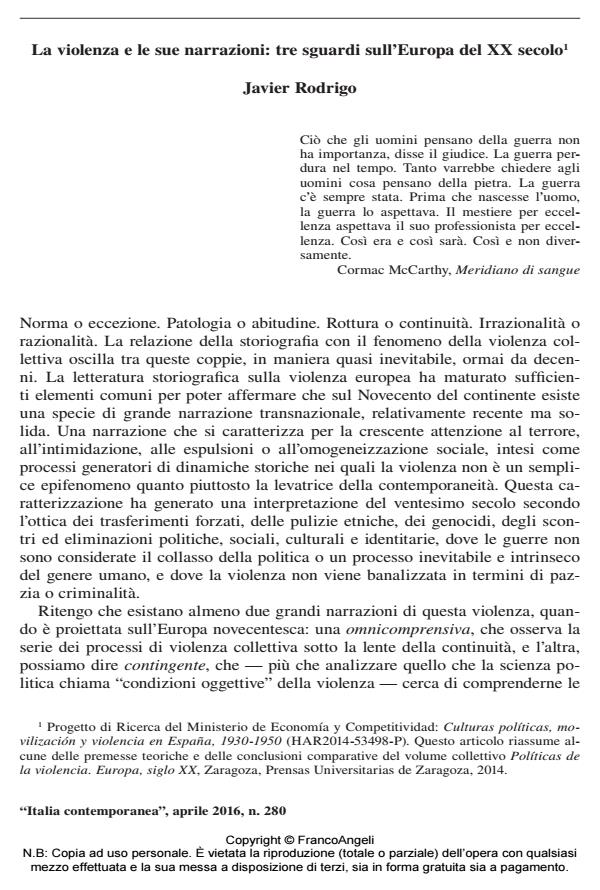La violenza e le sue narrazioni: tre sguardi sull'Europa del XX secolo
Titolo Rivista ITALIA CONTEMPORANEA
Autori/Curatori Javier Rodrigo
Anno di pubblicazione 2016 Fascicolo 2016/280
Lingua Italiano Numero pagine 13 P. 127-139 Dimensione file 107 KB
DOI 10.3280/IC2016-280007
Il DOI è il codice a barre della proprietà intellettuale: per saperne di più
clicca qui
Qui sotto puoi vedere in anteprima la prima pagina di questo articolo.
Se questo articolo ti interessa, lo puoi acquistare (e scaricare in formato pdf) seguendo le facili indicazioni per acquistare il download credit. Acquista Download Credits per scaricare questo Articolo in formato PDF

FrancoAngeli è membro della Publishers International Linking Association, Inc (PILA)associazione indipendente e non profit per facilitare (attraverso i servizi tecnologici implementati da CrossRef.org) l’accesso degli studiosi ai contenuti digitali nelle pubblicazioni professionali e scientifiche
Questo lavoro affronta le grandi narrazioni e le interpretazioni sull’Europa del ventesimo secolo, che lo hanno visto come il secolo della violenza, del terrore e del genocidio. Attraverso alcuni esempi forniti dal dibattito storiografico e con l’analisi di alcuni concreti processi storici (come i dibattito sul genocidio, sul sistema concentrazionario, sulle guerre civili o sull’Olocausto), il saggio sottolinea le caratteristiche di queste narrazioni ma anche alcuni limiti concettuali. Infine viene presentata una proposta per analizzare, dal punto di vista della contingenza storica, alcune delle continuità e discontinuità presenti nella storia della violenza collettiva europea.
Parole chiave:Europa, genocidio, violenza, terrore, storiografia
Javier Rodrigo, La violenza e le sue narrazioni: tre sguardi sull'Europa del XX secolo in "ITALIA CONTEMPORANEA" 280/2016, pp 127-139, DOI: 10.3280/IC2016-280007